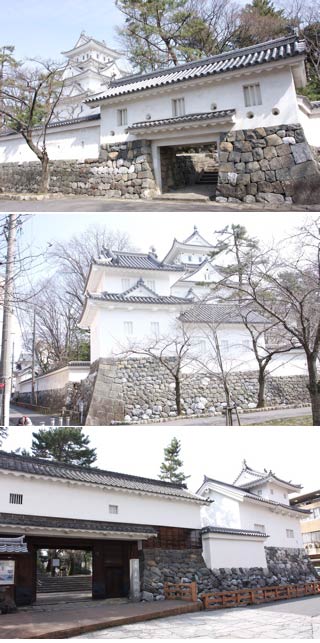Type: Flatland.
Built in: 1500 by Takegoshi Naotsuna.
Class: Reconstructed.
Ogaki Castle was called Todaiji Castle in late 15th century, and the lord of the castle was Ogaki clan who was local magistrate of Iwakanemyoh area.
Since then, the name of the castle was called Ogaki Castle. Later on, Miyagawa Yasusada, a lord titled Kichiemonnojo built a new castle in 1535. and then Ujiie Bokuzen, lord of Ogaki Castle, extended the castle in 1559.
Afterward, Toyotomi Hideyoshi, the most powerful Daimyo at that time, appointed Hitotsuyanagi Naosue, a lord titled Izunokami, the lord of Ogaki Castle and order him to built Tenshukaku in 1585 and finished it in July 1588.
In the battle of Sekigahara, Ito Morimune, the lord of Ogaki Castle at that time, was on Seigun side. He let Ishida Mitsunari use this castle for Seigun's headquarter. After the battle of Sekigahara, this castle was defeated by Ieyasu.
During Edo Period, it was ruled by Toda clan.
The castle having a tower of castle with four stories in three layers lacquered all over was very graceful and precious in the historical point of view for more than several hundreds years since then.
The castle was designated a national treasure and was known as a local museum.
Unfortunately, the castle was burned down by an air-raid in 1945. Afterward, the castle was restored to its original state in April 1959.







